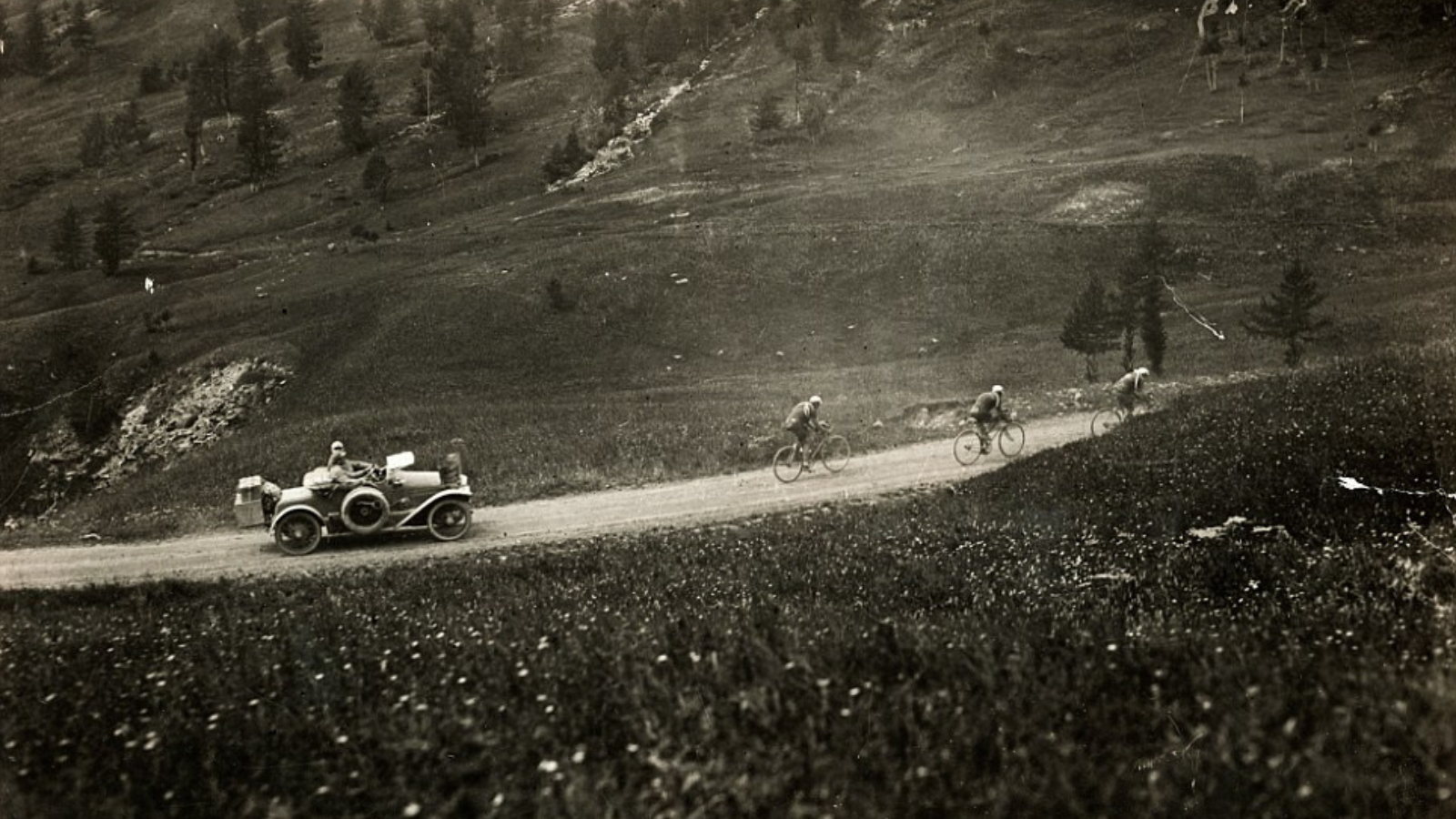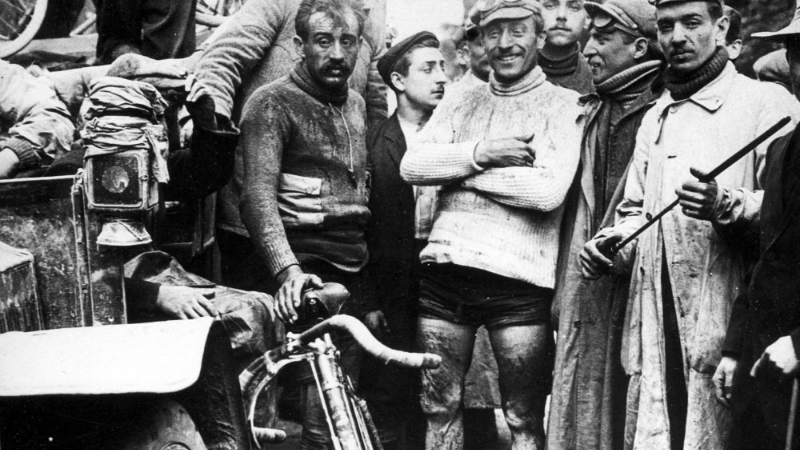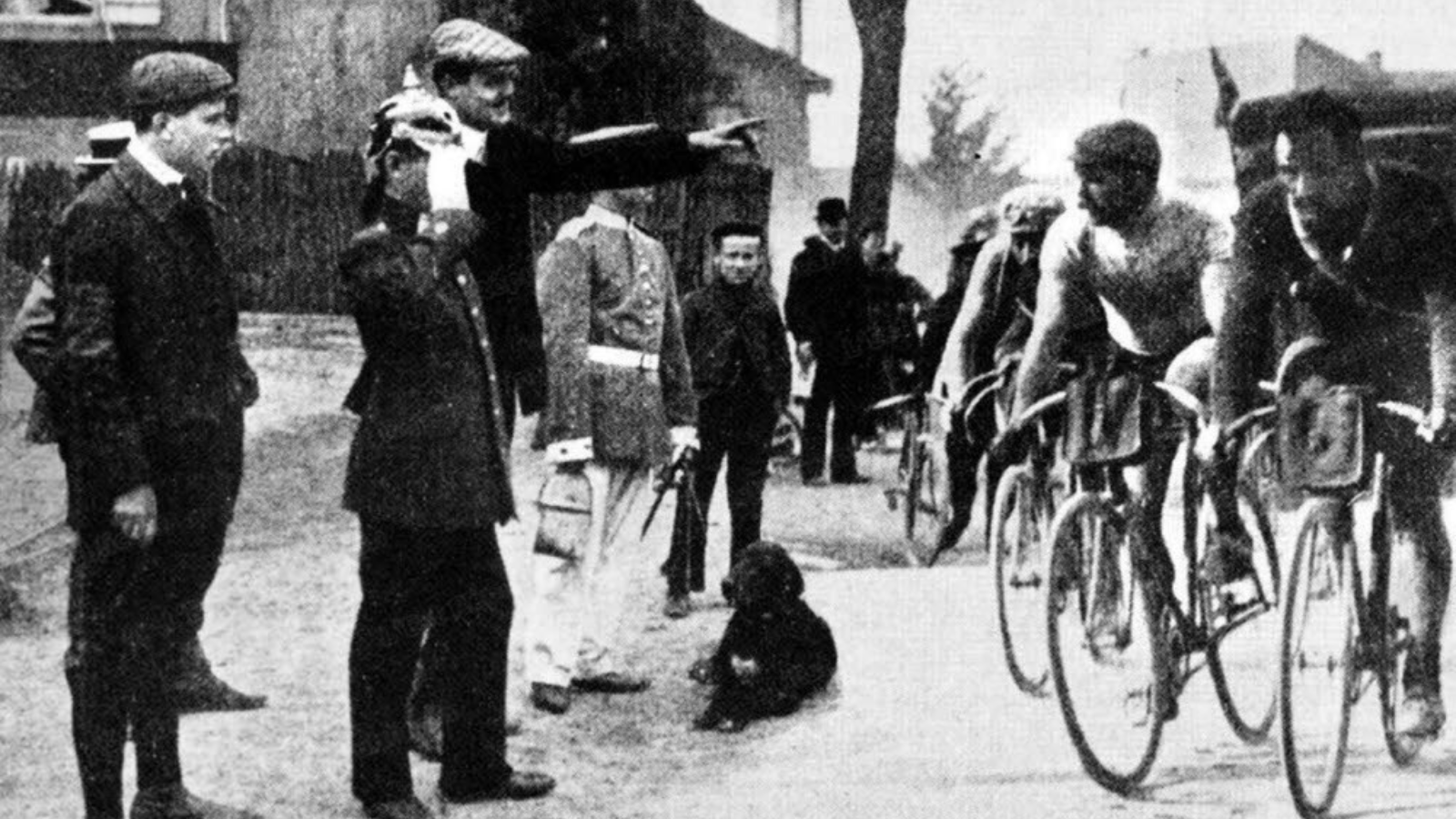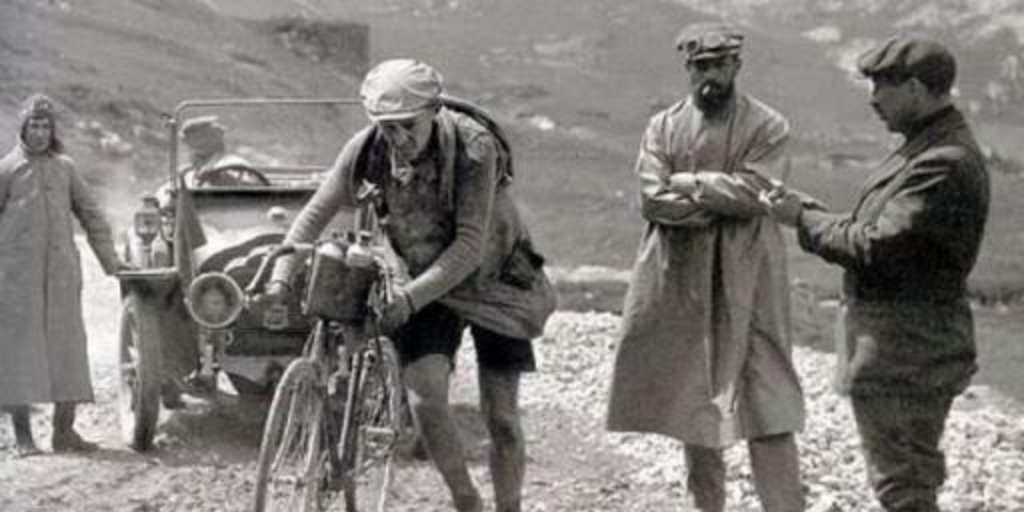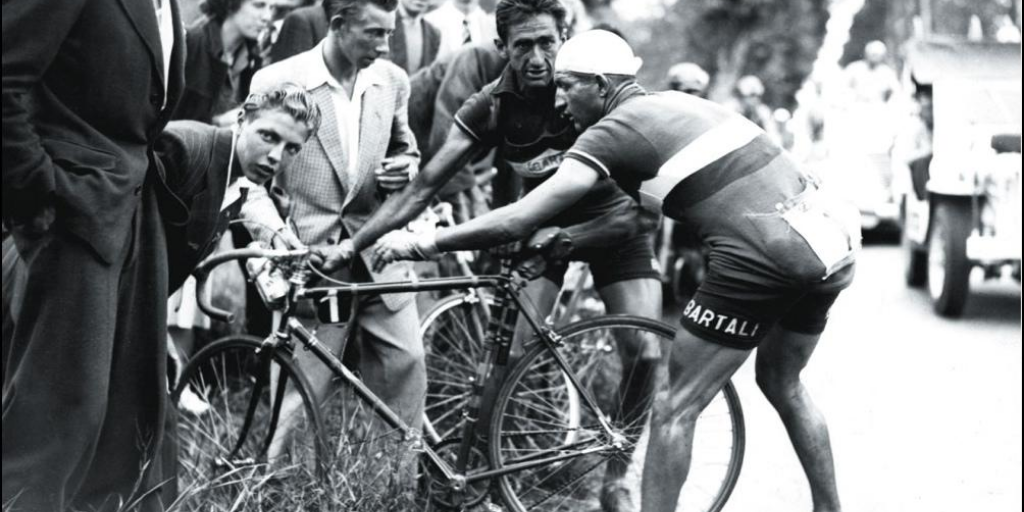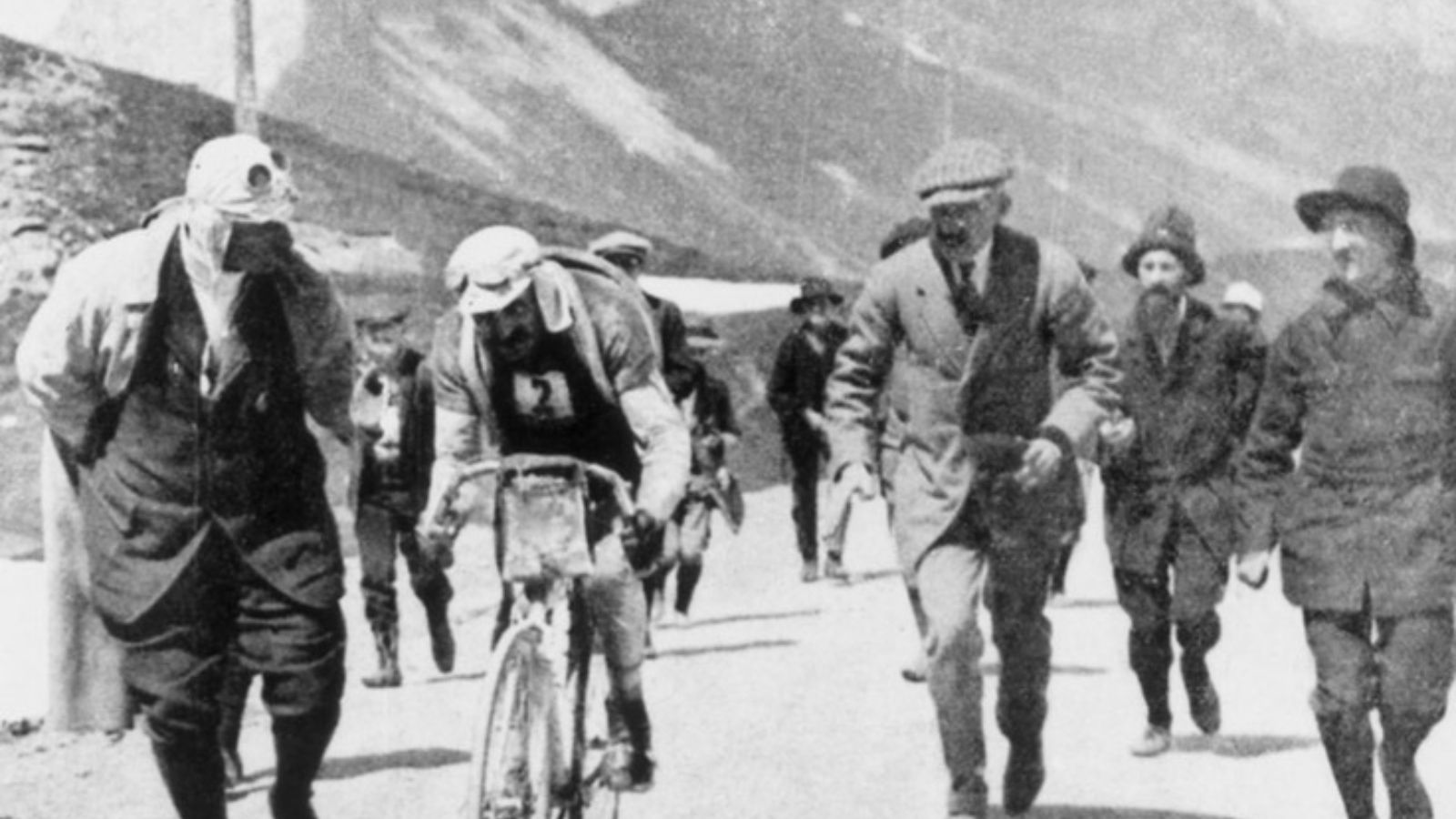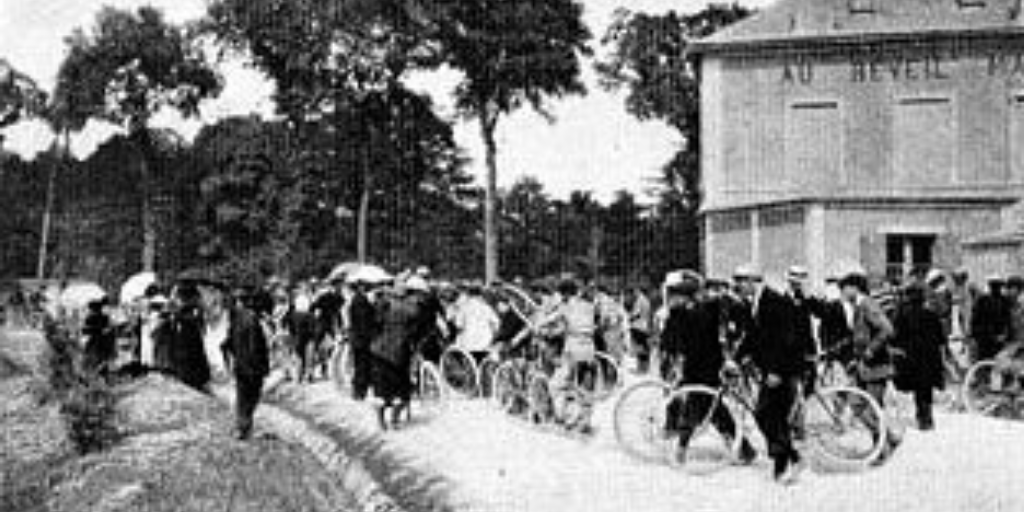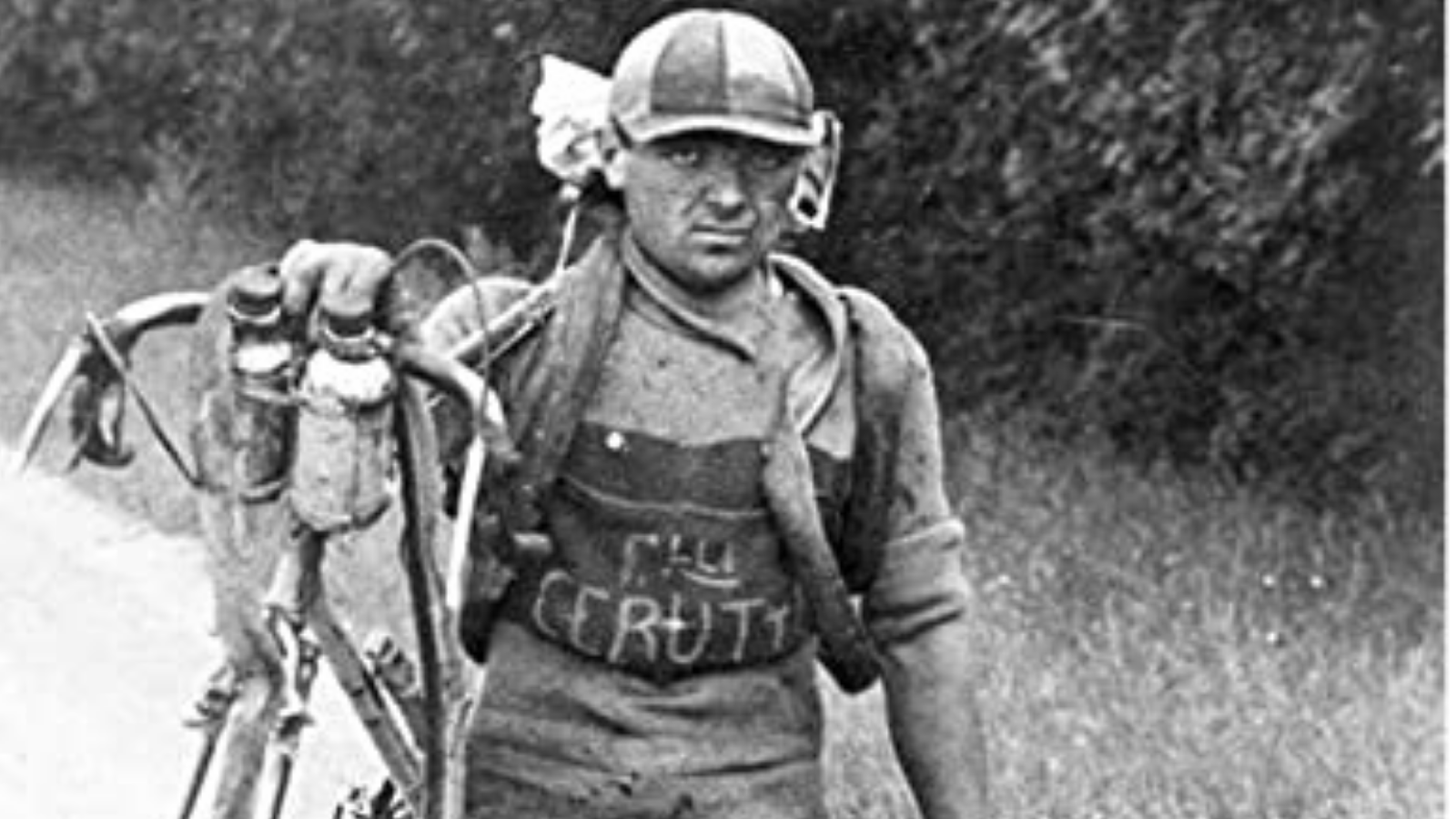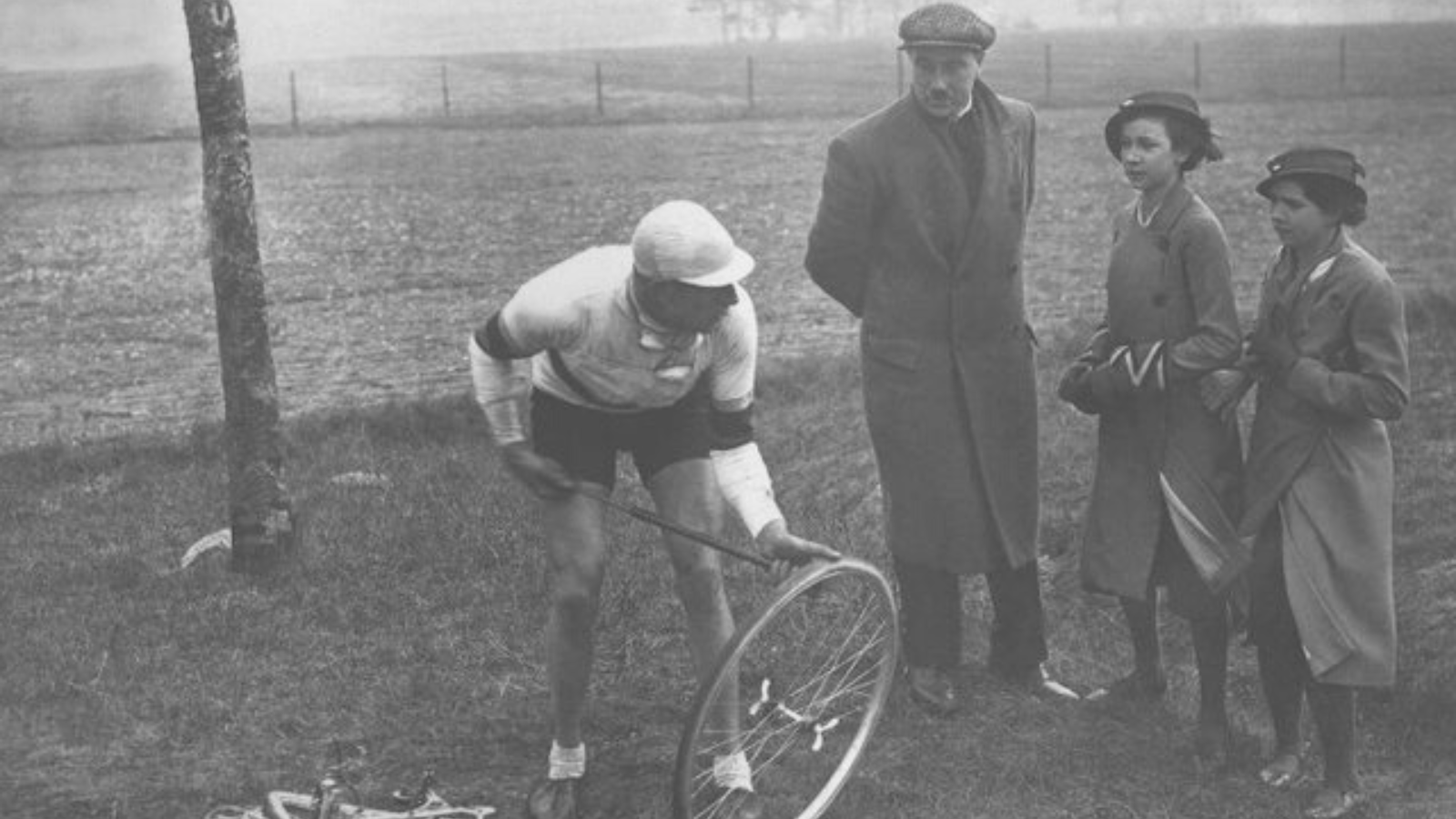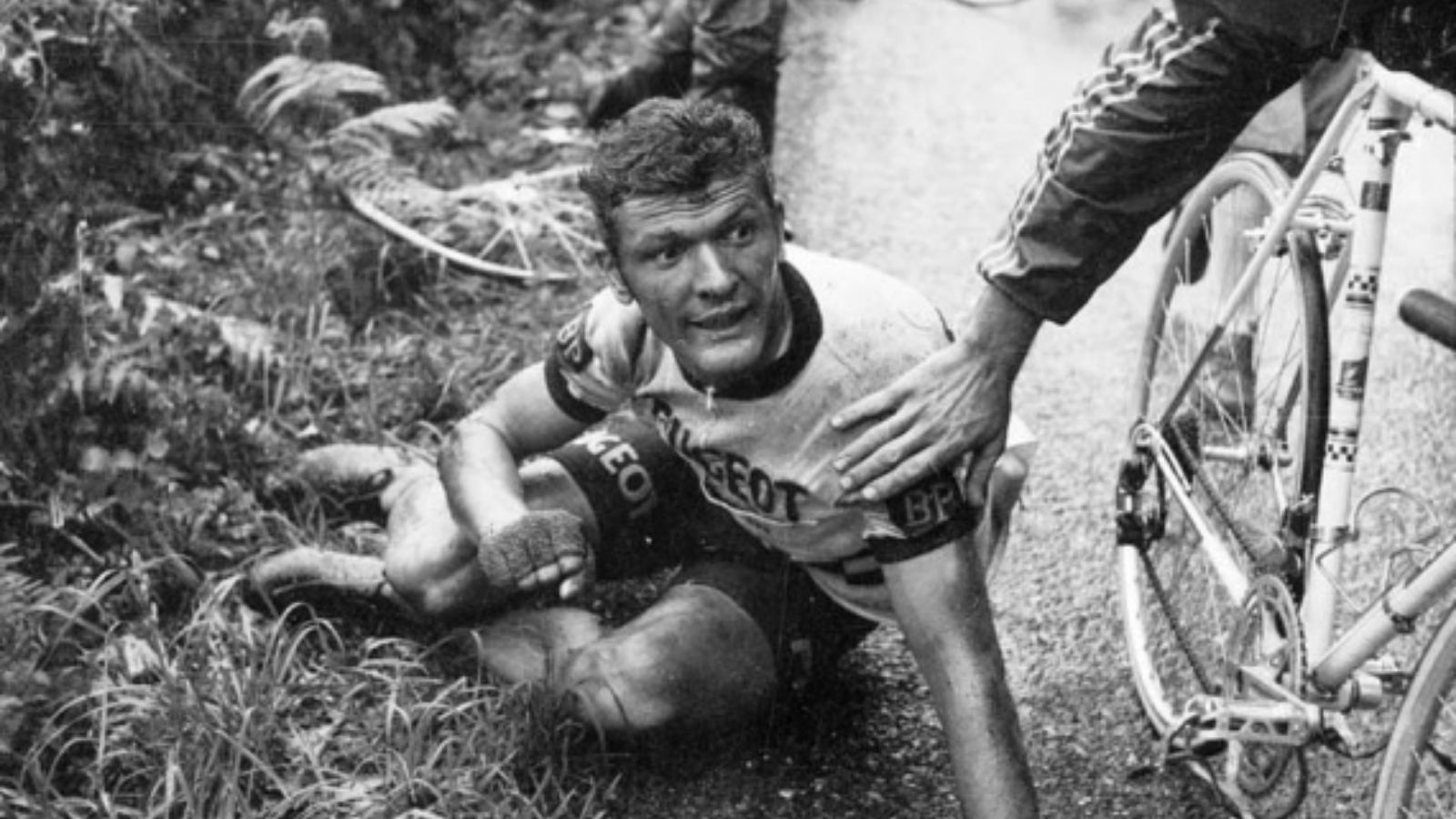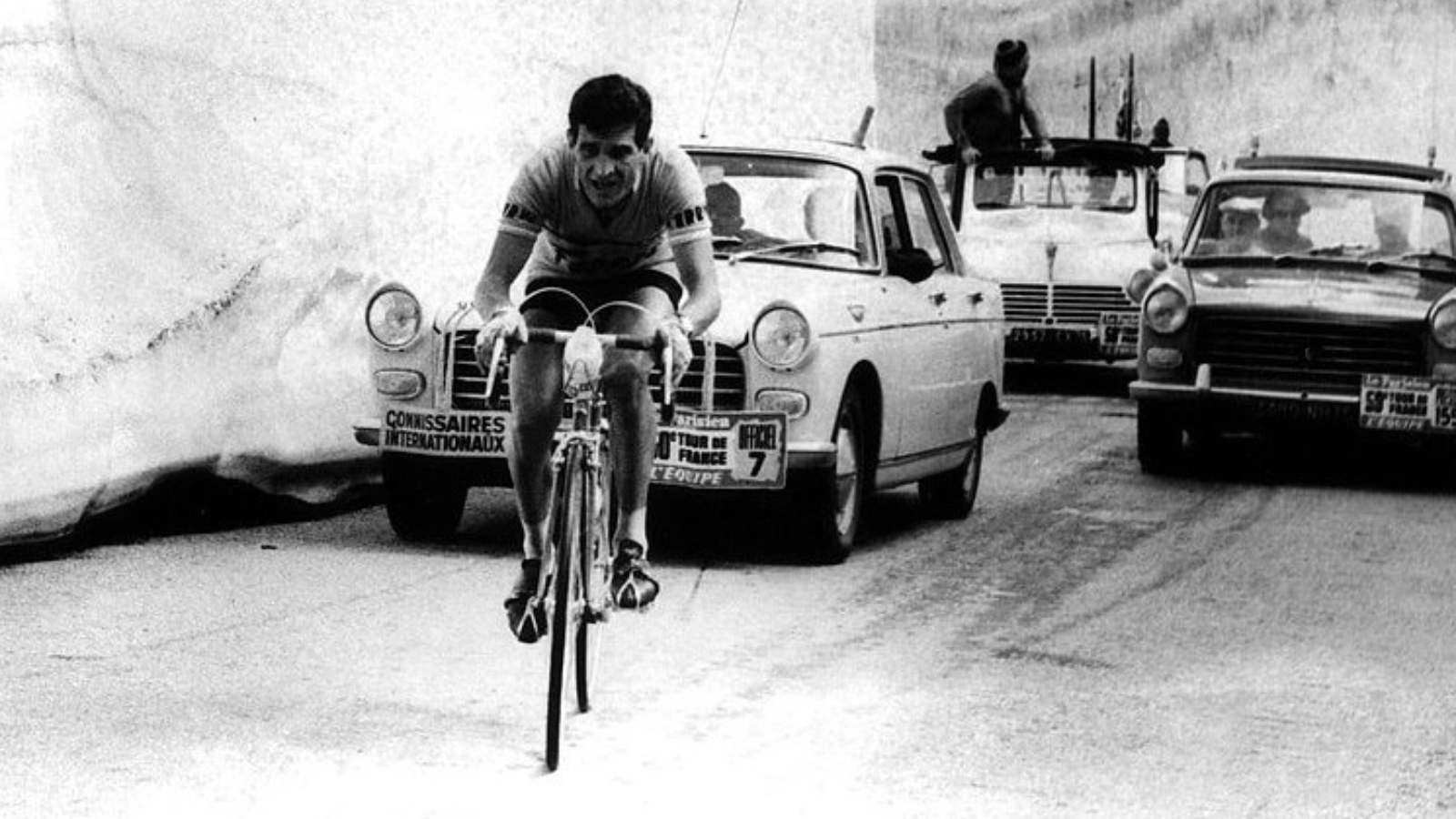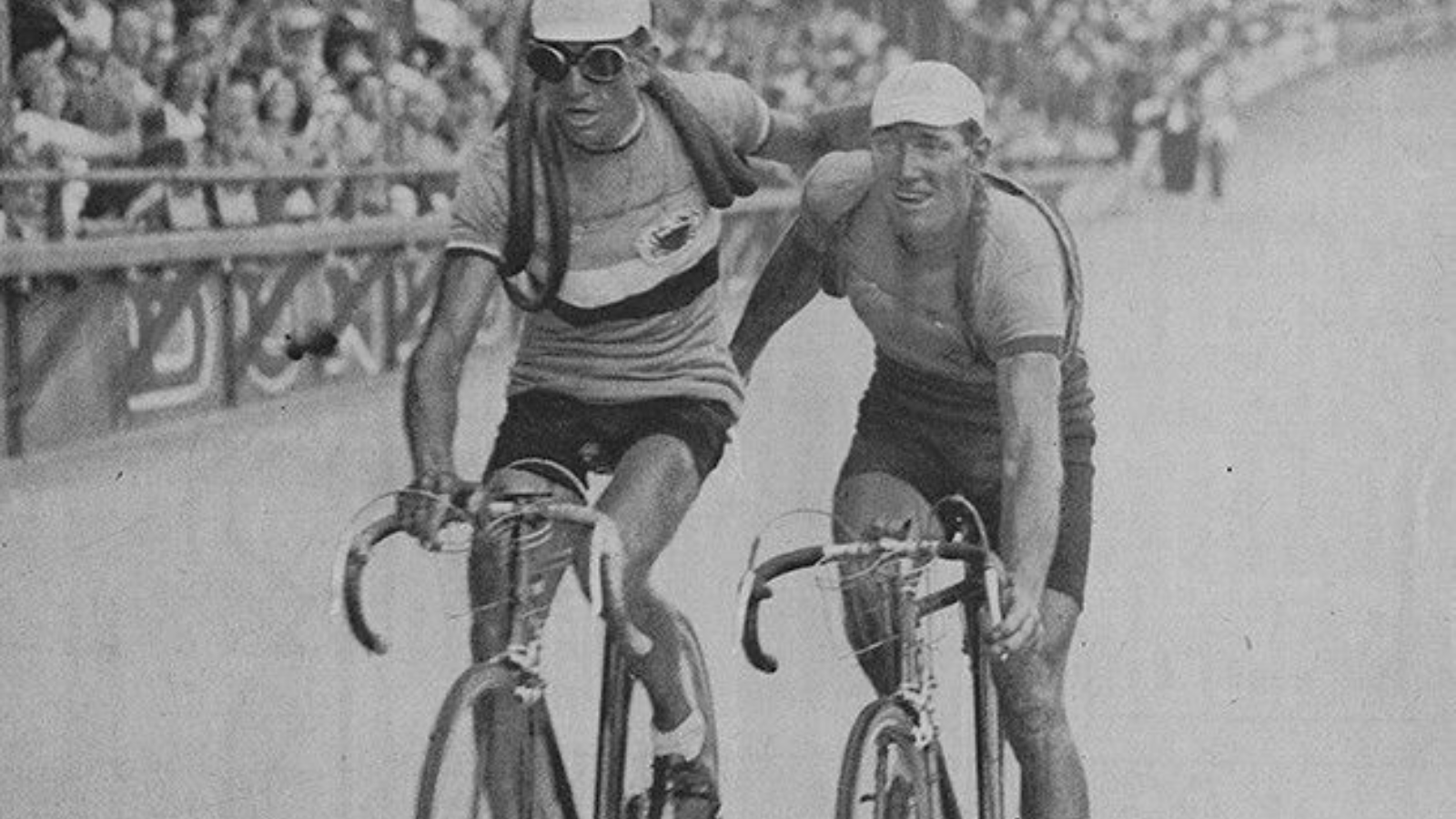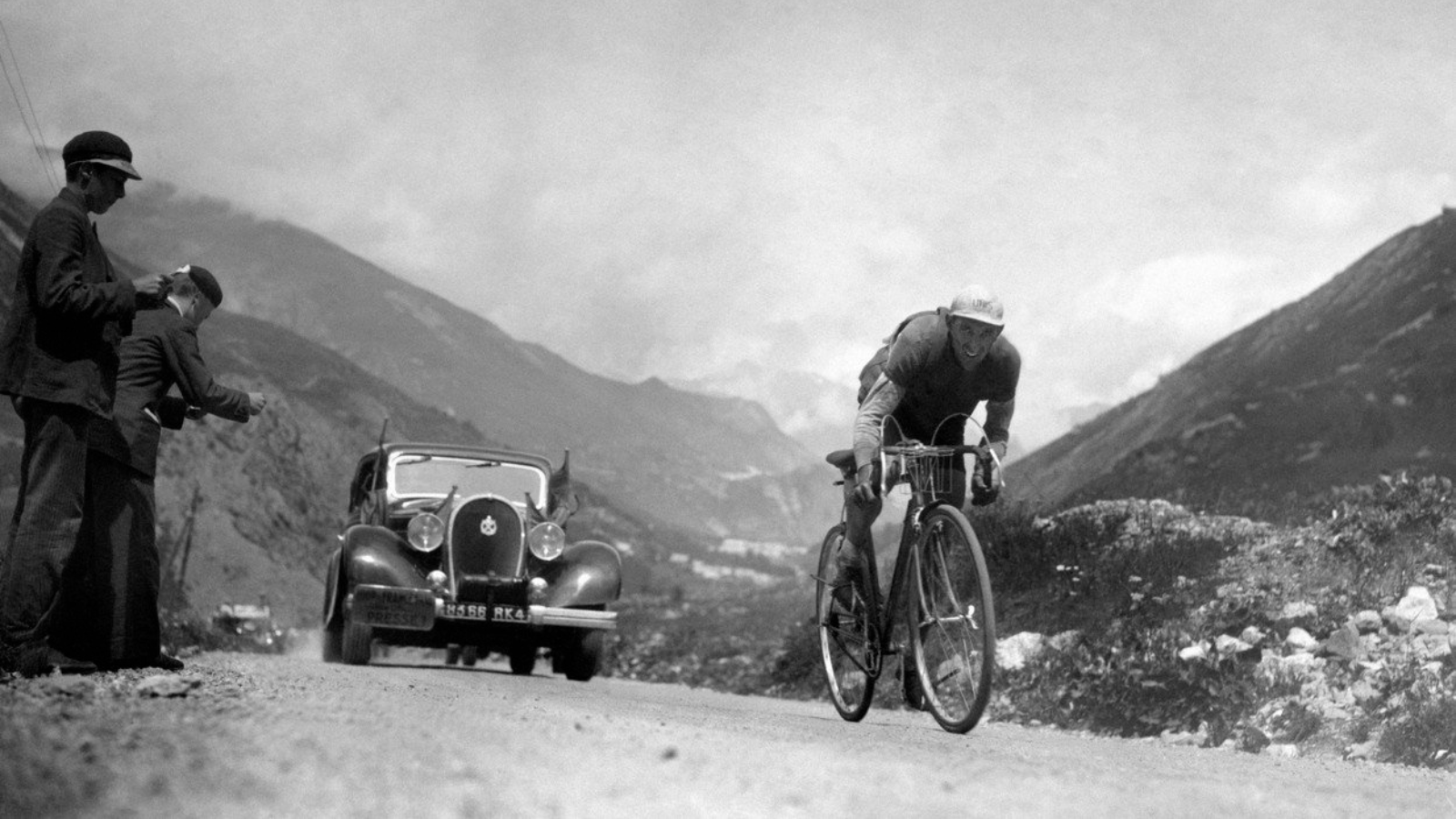Tour de France 1914 started on the same day, 28th June, as the Austro-Hungarian Archduke Franz Ferdinand and his wife, Sophie, Duchess of Hohenberg were assassinated in Sarajevo. When the riders lined up in the middle of the nigh for the start of the first stage in Paris, they knew nothing about that this day would determinate the life of millions worldwide.
They did not know either, that on 28th July, just two days after they finished the Tour de France, the Great War would break out and some of the cyclists would lose their life during the fights, including François Faber, who is among the three riders depicted on this image.
The Alps were important part of Tour de France since 1911, so was the ascent Col d'Allos. In this early period of Tour de France, when the race visited the Alps, it visited also Col d'Allons.
The 10th stage on 16 July was 323 km long, run between Nice and Grenoble. The program also included Col Bayard, which might be better known from history: Napoleon Bonaparte crossed the place on his return from Elba.
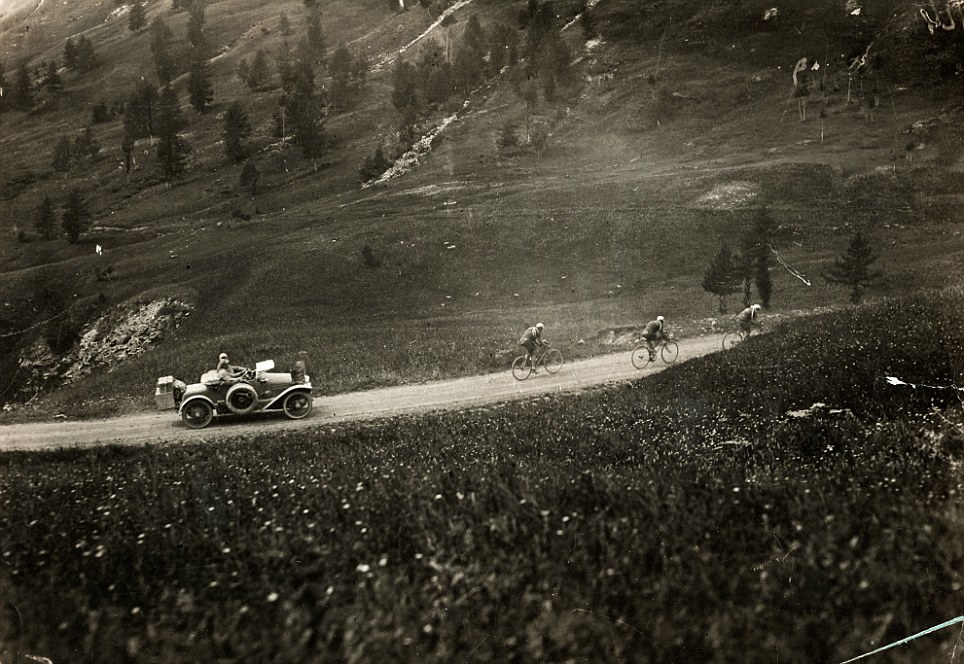
Belgian cyclist Philippe Thys, winner of previous year, dominated the race since the beginning, and was leading the general classification since the first Pyrenees stage (stage 6) of this edition. Thys won the race also in 1914. And once again, after the war in 1920, which made him the first 3-time winner in the history of Tour de France.
The 10th stage was won by Henri Pelissier (a future Tour de France winner, and one of the French winners with a tragic privat life). Pelissier had a quite good Tour de France in 1914. He won 3 stages (two of them in the mountains), was involved in the actions most in the mountain stages and finished second in the general classification 1minute and 50 seconds behind Thys.
Also the third cyclist on the picture, François Faber (winner of Tour de France 1909) won two stages and finished 9th in the general classification in 1914. Sadly, this was his last Tour de France every, he was killed in the war less than a year later.
There is a simple reason, why on PelotonTales blog there is a category called Tour de France the early years ( 1903-1914) The Great War and the five year hiatus of racing changed a lot in the world of road cycling races. Even when many riders from the top ten of 1914, like Thys, Pelissier, Firmin Lambot (winner of Tour de France 1919 and 1922) , or Jean Alavoine had some (smaller or bigger) success after 1919, the first big chhapter of Tour de France ended on the day when the peloton arrived back in Paris on 26 July 1914.
MORE TOUR DE FRAMCE BEFORE 1914
5 facts about Tour de France 1903
The first Tour de France started at 3 pm on the 1st of July in 1903 from the Café au Reveil Matin (Paris).
When Tour de France went abroad before 1914
Defining historical events of the 20th century often left their marks on road cycling history. Just think about, for istance, the impact of World War 1 on the mythology of some famous races, like Paris-Roubaix. The born of the famous phase of “Hell of the North” is a quite well known story among cycling fans. … Read more
Faces from the peloton: Hippolyte Aucouturier (1876-1944)
Although the idea of a French cyclist in a striped shirt might seem like a little bit of a cliché, sometimes stereotypes are carrying quite much truth in themselves. Just take a look at Hippolyte Aucouturier! One of the most iconic characters from the early days of road cycling races. Nevertheless, he was not only … Read more
Introducing Col du Tourmalet to Tour de France
It was a great moment and yet one of the weirdest situations in the history of Tour de France, when and, it seems to be more important, how the organisers decided to put Col du Tourmalet in the program. Crossed Tourmalet stop. Very good road stop. Perfectly passable. -stood in the telegram Alphonse Steinès sent … Read more
Four scandalous Tour de France editions
In its more than 120-year-long history Tour de France, the most famous road cycling race of the world witnessed good time and bad time either. It had plenty of glourious moments, but also some shameful ones. Here are the four (arguably) most scandalous editions in the history of Tour de France . 1904 – an … Read more
10 July 1911 The first mountain stage in the Alps at Tour de France
After the introduction of the Pyrenees to the race in 1910, the next big challenge of Tour de France was how to include the “giants of the Alps” into the program. The story behind using Galibier, Thelegraphe, Aravis, and Lautarer was far less dramatic than the organizers’ first encounter with Col du Tourmalet. Nevertheless, the … Read more
1 July 1903 The first Tour de France started
The first Tour de France was held between 1 and 18 July 1903, included only 6 stages. (However, the complete route was 2428 km long.)60 riders started and 21 finished the race.The fist Tour de France was won by Maurice Garin.
MORE VINTAGE CYCLING IMAGES
The grumpy cyclist with the broken bicycle – Giusto Cerutti at Tour de France 1928
Giusto Cerutti (1903-1993) had at least one bad day at the Tour de France in 1928.We don’t know much about the grumpy cyclist with the broken bicycle. But one thing is sure, he is the unlucky (anti)hero of one of the most searched vintage cycling images on the internet.According to ProCyclingStats, Cerutti abandoned the race … Read more
Georges Speicher at Paris-Roubaix 1935
Although Paris-Roubaix in 1936 was more important in the career of Tour de France winner (1933) cyclist Georges Speicher, one of the most popular funny vintage cycling images from the good old days of road cycling was taken one year earlier.Georges Speicher (1907-1978) was a French rider, the first cyclist who won Tour de France … Read more
Iconic Cycling Images: Bernard Thévenet after a crash (Tour de France 1972)
The race in 1972 was Bernard Thévenet’s second Tour de France. In his devutant year, in 1971 he finished fifth in the general classification and also won stage. It was a bit of a surprise performance, but in the subsequent year he was considered as one of the favourites. The 7th stage of Tour de France … Read more
Cyclists meet a local inhabitant during Tour de France 1925
During the first few decades in the history of Tour de France, mountain routes were kind of “terrae incognitae”, uncharted territories. We all know the story when Alphonse Steniès persuaded Henri Desgrange to include Tourmalet in the program of Tour de France 1910. He was struggling even to find a car driver, a local guide … Read more
Fernando Manzaneque on the Col d’Iseran (Tour de France 1963)
Snow at the Tour de France? Yes, it happens sometimes, especially, when the race visits such high places like Col d’Iseran in the Alps. In the 16th stage of Tour de France 1963, the peloton visited the Alps. It was a 202 km long stage between Grenoble and Val d’Isere, including Col de la Croix … Read more
André Leducq and Antonin Magne crossing the finish line together (Tour de France 1938)
Before Greg LeMond and Bernard Hinault on the top of Alpe d’Huez, there were André Leducq and Antonin Magne in Paris. Two dominant French riders from the first part of the 1930s, both Leducq (1930 and 1932) and Magne (1931 and 1934) won the Tour de France twice. In the very last stage of Tour … Read more
Fédérico Ezquerra on the Galibier (Tour de France 1936)
Col du Galibier was part of the 7th stage alongside with Thélégraphe and Lautaret at the Tour de France in 1936. (Usually, when the peloton climbs Galibier, they climb also Thélégraphe and Lautaret.) The 230 km long stage ended in Grenoble (hilltop finishes were introduced to Tour de France only in 1952), and a whole … Read more
